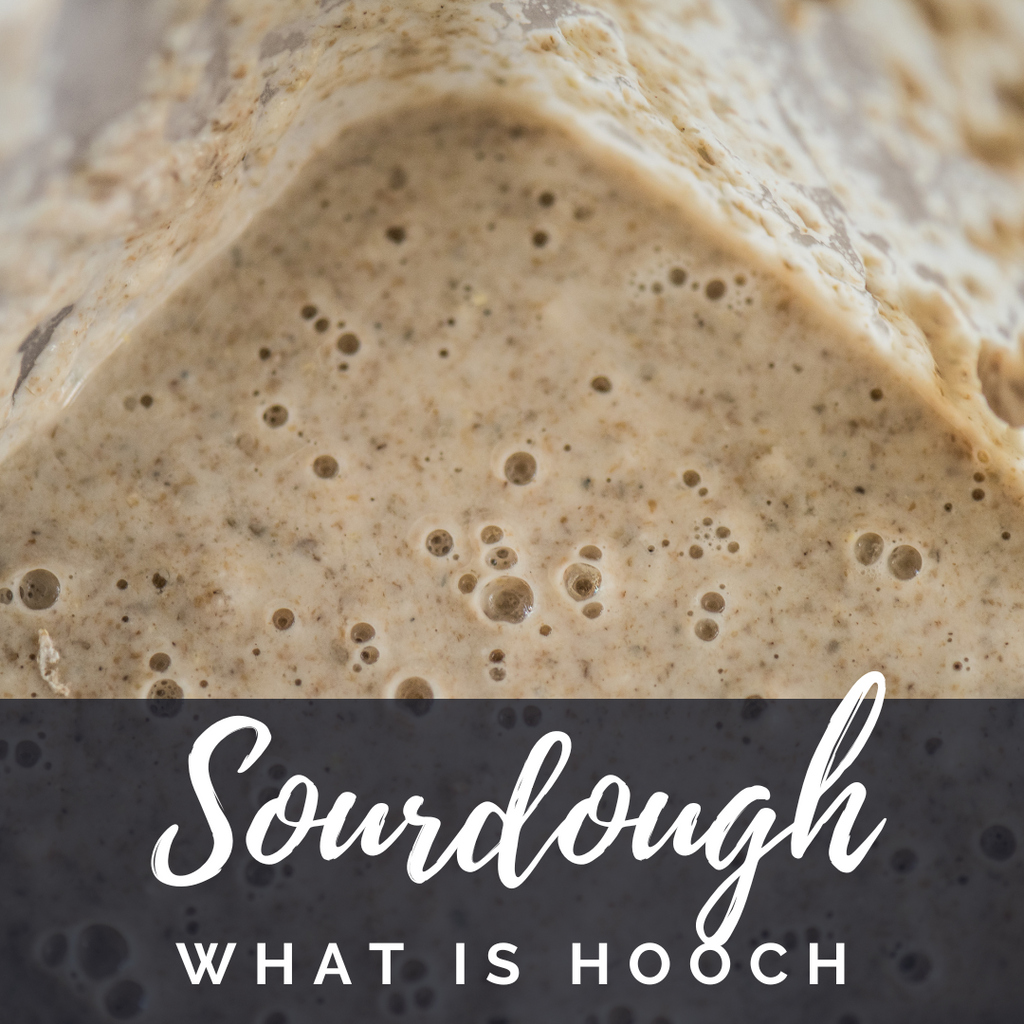Why does my Sourdough Starter Smell Funny; What is Hooch and Why does it Develop?

Why does my Sourdough Starter Smell Funny; What is Hooch and Why does it Develop?
The science behind sourdough starter fermentation involves the complex interactions between wild yeast and lactic acid bacteria, both of which play crucial roles in transforming the mixture of flour and water into a lively, flavorful starter. Here's a breakdown of the key processes that occur when a sourdough starter is "fed":
Imagine your sourdough starter as a tiny ecosystem with hungry microbes (wild yeast and bacteria) living in it. Feeding your sourdough starter is like offering it a buffet of fresh flour and water. It's the food for the hungry microbes. The wild yeast in the starter loves to munch on the protein in the flour. As it eats, it produces bubbles of carbon dioxide (like burps) that make your sourdough starter (and dough) rise. The bacteria in the starter also join the feast, creating acids that add a tangy flavor to your sourdough. Feeding keeps this tiny ecosystem happy. If you forget to feed it, the microbes get hungry and might start producing a liquid called hooch (like a cry for more food). By adjusting how often and what you feed your starter, you can control the flavor and rise of your bread. The relationship between yeast and bacteria in a sourdough starter is symbiotic. Yeast provides the carbon dioxide necessary for leavening, and bacteria create the acidic conditions that promote their own growth while adding tanginess to the flavor. When you "feed" a sourdough starter, you're essentially providing it with a fresh supply of flour and water, which is the food it eats. This replenishes the nutrients available to the culture, ensuring their continued strength and activity. If a starter is not fed regularly, the available sugars are exhausted, leading to the production of hooch (a liquid layer of alcohol and other byproducts) and a decrease in culture activity.
What Should my Sourdough Starter Smell Like?
The aroma of a sourdough starter can vary throughout its fermentation process. In the early stages, it may emit a slightly sweet or fruity fragrance as the yeast begins to develop. As fermentation progresses, the smell can become more pronounced, evolving into a tangy or even slightly sour scent. While these odors might seem unusual compared to traditional bread-making methods, they are entirely normal for sourdough. Though, it's important to know a sour smell is normal but a smell of vinegar or acetone (nail polish remover) are symptoms of a severely neglected sourdough starter that's starving.
Why Does my Sourdough Starter Smell like Vinegar / Acetone?
If your sourdough starter has a vinegar or acetone-like smell, don't worry; it's a common occurrence and is usually a sign that your starter is going through certain stages of fermentation. It can be resolved. Here are a few reasons why your sourdough starter might have a vinegary or acetone smell:
Starvation or Over-fermentation: This is the most common reason your starter will smell rancid. If your starter has been left unfed for too long, the microbial activity might shift, leading to the production of more acetic acid. On the other hand, if the starter is over-fermented, it can also develop a stronger vinegar or acetone aroma. This typically happens when the starter has been left unfed for multiple days. To resolve: Discard and offer the starter an overfeed of 1:2:2
The Role of Hooch:One element that often raises questions among new sourdough enthusiasts is the appearance of a liquid layer on top of their starter, known as hooch. Hooch is essentially a byproduct of the fermentation process and is composed of alcohol and other liquid byproducts. Its presence is a sign that your sourdough starter has been hungry and is in need of feeding.
Hooch develops when the yeast consumes the available sugars in the flour and produces alcohol as a result. This is a natural part of the sourdough fermentation process. If your starter hasn't been fed recently, the hooch rises to the top, indicating that it's time to refresh the mixture with a new round of flour and water. Hooch can appear as a clear or eveb grey-ish colored liquid layer.
Managing Hooch and Maintaining a Healthy Starter:
While the development of hooch is perfectly normal, it's essential to manage it appropriately to keep your sourdough starter thriving. When you notice hooch on top of your starter, you can choose to pour it off, or you can stir it back into the mixture before feeding to give it a more tangy flavor. This redistributes the liquid and ensures that the yeast receives fresh nutrients to continue its fermentation journey.